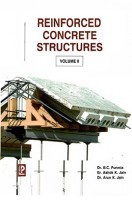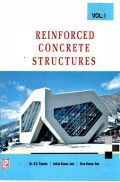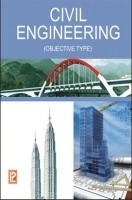Land Drainage: Principles, Methods And Applications by A. K. Bhattacharya, A. M. Michael
Book Summary:
Providing drainage facility to irrigated agricultural land is as important an activity as irrigation itself. Drainage provides for an escape of the unwanted excess water that occurs over the flowirrigated lands. Without adequate drainage, water congestion on the surface and in the crop root zone occurs that harms the crop environment and the crops. Runoff due to heavy rains in the monsoon season also needs to be removed from the crop land to save the growing crops, avoid fast water table rise into the crop root zone and also to make the soil workable faster. A properly designed, executed and maintained agricultural drainage system ensures all these, which enhance the sustainability of irrigation benefits. The benefits of irrigation are quick to accrue, while the ill effects of improper water management are visible later. Meanwhile, gradual degradation occurs to the irrigated lands due to water table rise, soil salinization and alkali condition, all adversely affecting crop production. At an advanced stage of land degradation, the remedy through drainage becomes expensive or difficult. Land drainage is well-practised in most of the developed nations even though agriculture may not be the main stay of their national economy. The general principles of surface and sub-surface drainage are universally true. However, the applications of specific procedures vary with the soil, climate, topography and socio-economic situations. Drainage needs in Monsoon Asia, for example, are distinctly different from those in other geographical regions. In many of the Central and West Asian countries and in North Africa salt management assumes major importance along with water table control. Absence of a comprehensive and authoritative text/reference book, oriented to the problems of agricultural drainage in India and the developing world has been a major limitation in the application of appropriate technology in this area of vital importance in agricultural production.
Audience of the Book :
This book Useful for Civil & Agriculture Engineering Student.
Sailent Feature:
1. Application-centric approach
2. Global scenario of drainage
3. Well-illustrated examples
4. Self-assessment questions with answers
5. Case studies of Drainage and Salt Management
6. Study of different drainage models
7. Discussion of drainage in Indian context
Table of Content:
1. Drainage and Salt Management for Sustainable Agricultural Production
2. Physical and Surface Morphological Properties of Soil in Relation to Drainage
3. Chemical Problems of Soil and Water
4. Drainage Investigations
5. Design of Surface Drainage Systems: Hydrologic and Hydraulic Considerations
6. Design of Surface Drainage Systems: Hydrologic and Hydraulic Considerations
7. Ancillary Structures in Drainage Systems
8. Non-Conventional Drainage Methods
9. Layout and Construction of Drainage Systems
10. Model Studies in Drainage
11. Case Studies of Drainage and Salt Management in Irrigated Areas
Appendix


















